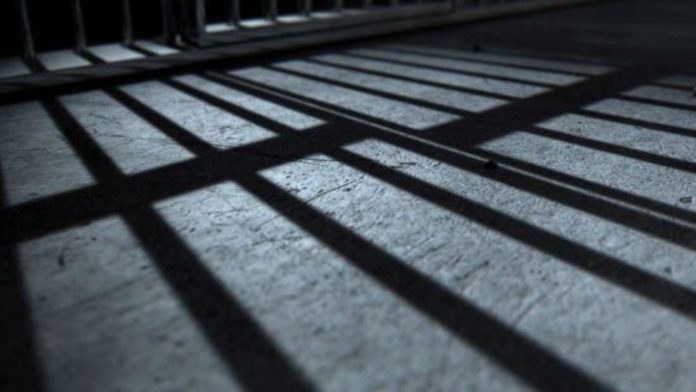This article is written by Abhishek Sahu.
Table of Contents
What is Test Identification Parade and its Purpose?
It is a process that is mostly used in criminal cases to identify the accused before the court. The role of the witness is very important in the test identification parade because it is the responsibility of the witness to identify the accused through the parade.
The idea of this process is to check whether the witness can identify the accused among the various several individuals. This will establish the fidelity of the witness in identifying an unknown person related to the context of the offense.
Law enforcement often uses this mechanism to establish the credibility of the witness and it is mostly used in cases where the witness has never seen the accused except on the crime scene. [1]
Law governing the Test Identification Parade
Section 9 of the Indian Evidence Act, 1872 and Section 54A of the Code of Criminal Procedure, 1973 deal with the procedure and the legality of the Test Identification Parade.
Section 9 of the Evidence Act makes the test of identification of proper accused and properties admissible and relevant facts in a court of Law, but this act does not make it obligatory for the accused to present for the Test Identification Parade by the investigating officer. [2]
The problem of Section 9 of the Evidence Act is tackled in Section 54A of the Code of Criminal Procedure, 1973. This section says that when the identification of an accused by the witness is considered necessary for investigation of such offense in which the accused is arrested, the Court, having jurisdiction, may on the request of the officer in charge of a police station, direct the accused so arrested to subject himself to identification by witness or witnesses in such manner as the Court may deem fit. [3]
Procedure to Follow
For Identification of accused by Parade
- As mentioned above Witness plays an important role in the Test Identification Parade when the witness informs the Officer in Charge that he can identify the accused or other persons connected with the offense then the officer in charge will arrange for the Test Identification Parade.
- Officer In-charge should ask the following questions to the witness to create nearly the same environment in which the witness has seen the accused and should mention it in the case diary. These questions are:
- Accused description.
- the extent of prevailing light at the time of the offence (daylight, moonlight, flashing of torches, burning kerosene, electric or gas lights, etc).
- details of opportunities of seeing the accused at the time of the offense; anything outstanding in the features or conduct of the accused which impressed him (identifier).
- distance from which he saw the accused.
- the extent of time during which he saw the accused.
- Officer in charge or any other police officer should be expunged from the real Test Identification Parade.
- The judicial Magistrate shall commence the Test Identification Parade.
- If Judicial Magistrate is not available then arrange for two or more respectable members of the society. But these Officer in charge has to make sure that these people don’t have any link to the accused or any witness.
- An identification parade should be commenced immediately after the arrest of the accused without any delay.
- If a case has more than one accused and only one or few accused got arrested then the identification parade of the arrested accused shall be arranged don’t postpone the parade. And as the remaining accused got arrested Identification parade should be arranged for them as well.
- Inform the accused person that he/she will be put up for the Identification Parade.
- Witnesses or Witnesses should be kept out of the sight of the accused. And make sure that witness and people standing for the parade has no mode of any communication or signals.
- Accused should be mingled with the different look-alike in the ratio of 1:5 or 1:10 and they all should stand in a line.
- In the case of many witnesses, they should be call one by one and asked to point out the accused if any.
- There should be a complete record of the proceeding even the mistake committed by the witness or the witnesses in identifying the accused.
- Care should be taken that the two-witness won’t mingle with each other. Especially if identification is already done by one witness and another witness is still yet to go for identification. This will beat the whole purpose of the Identification Parade.
- If officials doubt that witnesses had talked to each other then they have to reshuffle the whole parade and the accused is made to take different positions.
- If the accused has any objection while the parade it should be well recorded.
- After the Test Identification Parade is over a duly sign certificate must be given by the Magistrate who has conducted the Parade.
- Because identification is done in jail jailor should be informed about the Identification Parade on the admission of the suspect.
- And clear instruction should be given to the jailor to not change the appearance of the admitted accused or his clothes before the identification parade.
- If the witness is injured then the officer should take written permission from the concerned medical authority before bringing the witness for the Test Identification Parade to identify the assailant.
- If permission is given by the medical authority, then the officer should arrange the transport of the witness immediately.
- If the witness is not fit and cannot be taken to the nearest court, police station, or jail then the Identification Parade can be organized on the premises of the hospital.
- If the witness is declared unfit to be present at the Identification Parade, then the Officer In-charge should wait until the medical authority gives the proper certificate that the witness is fit for the identification parade.
- And if the witness can’t attain the parade and identify his assailant because he is unwell then the officer in charge should submit the evidence which suffices the reason why the parade can’t be held. [4]
Identification of accused by Photograph
- A witness can be asked to identify the accused from the photograph when the accused is not in custody.
- Every police station has a photographic record of the history sheeters. These photographs can be shown to the witness for identification.
- A bunch of photographs should be shown to the witness among which there is the real photograph of the accused. And the witness should be asked to identify the accused from among these photographs.
- It should also be ensured that the photograph of the accused does not become public through media or some other channels.
- But after the accused is arrested regular identification parade should also be held. [5]
Test Identification of the Property
- In criminal cases sometimes identification of the object used in the crime becomes necessary, for this purpose Identification of Property is done.
- When a witness claim that he can identify the properties connected with the case under investigation Police Officer In charge of the case should ask the following questions:
- Description of the property.
- If it has any unique identification mark.
- If the witness has seen this property earlier under any circumstances.
- If the witness has handled the property earlier.
- Or any other relevant circumstances.
- An object which does not have any special Identification Mark has more evidential value than the object that bears Special Identification Mark.
- Find out whether or not bargaining struck at the time of the purchase.
- Reason- The purchase of the property at the lower or the higher price from the market value on that particular day without any bargain will share some light on the nature of the transaction and the intention of the buyer or seller.
- The date, Time, and Place of such purchase should be mentioned and registered in the dairy.
- Reason- The date will help in establishing the timeline between the time of purchase and the time of theft. And the time and place will help in finding whether the transaction was bonafide or not.
- Officer in charge should make a clear record of the following thing in the case diary:
- the nature of the article
- age of the seller,
- his status in life
- his social group,
- age of the receiver,
- his status in life.
- Reason- These circumstances will help to find that the transaction was honest or dishonest. If a normal person makes a sale of a valuable article like jewels which is not even worn by anyone in his social group also then this looks suspicious on the part of the seller. If a young person makes a sale of something really valuable then it’s suspicious too.
- It should be mention clearly in the case diary by the officer in charge of the places search to find the stolen property and how it was recovered. Evidence that the stolen property was buried underground or was concealed in the walls or secreted in back yards or houses, etc., will help to establish the nature of the property.
Process after Test Identification Parade is finished
- After the Identification Parade of person or property is over it should be verified and ensured by the investigation officer that the proceeding of the parade matches the details recorded by him/her in the case diary.
- The Investigating Officer should remember that the Magistrate who recorded the Identification Parade of the accused person is cited as a witness in the memo of evidence to speak about the conduct of the Identification Parade and to mark the report of the parade. [6]
Evidential Value of Test Identification Parade
Identification of the accused by the witness in the Test Identification Parade is a shred of primary evidence but not substantive evidence it is used to support the identification of the accused by the witness in a court of law. On the other hand, if the witness identifies the accused in the court of the law, then it is substantive evidence.
Interestingly if the Test Identification Parade is not held earlier and the witness identifies the accused for the first time in the court of law then the Identification Parade is no longer required if the court found it trustworthy.
The general rule is that the witness identifying the accused in the court alone is not the basis of the conviction of the accused unless it is ratified by the previous Test Identification Parade. But there are some exceptions to this rule.
Exception for Test Identification Parade
Supreme Court in the case of State of H.P. v. Prem Chand held that Test Identification Parade is not necessary when the witness already knew the accused and identify the accused in the court of law.
This judgment was again upheld by the Apex Court in the case of Ramesh Kumar v. State of Punjab where it again clarifies that the Test Identification Parade is not necessary when the witness already knew the accused.
Supreme Court in the case of State of A.P. v. v.K. Venkata Reddy held that the testimony of a witness in the court of law is the substantive testimony and identification of an accused in the Test Identification Parade is only the confirmatory of the testimony made before the court.
Supreme Court in the case of Dana Yadav V. State of Bihar upheld its decision and again made it clear that the sole purpose of TIP is to lend corroboration to the court identification of the accused. [7]
Landmark judgments on Test Identification Parade
Supreme Court in the case of Hare Kishan Singh V. State of Bihar [8] held that the Court identification of the accused by the witness is useless when the witness has already failed to identify the accused at the Test Identification Parade.
Supreme Court in the case of Kishore Prabhakar Sawant V. State of Maharashtra [9] held that if the accused is caught red-handed from the Crime Scene, then no question of Test Identification Parade arises.
The Supreme Court, in the case of, Kiwan Prakash Pandurang Mokash V. State of Maharashtra[10] held that if the accused refuses to appear for Test Identification Parade, then an adverse inference of guilt can be drawn against him under Section 54A of the Criminal Procedure Code, 1973.
Supreme Court in the case of Suraj Pal Singh V. State of Haryana [11] held that the accused can’t be compelled to line up for Test Identification Parade and if the accused refuses to submit himself for Test Identification Parade, he does so at his own risk.
Supreme Court in the case of State of Maharashtra V. Suresh [12] said that the Test Identification Parade is done for the benefit of the investigation they are not primarily held for the court.
Conclusion
Test Identification Parade might not be substantive evidence but it plays a very vital role in the investigation. It helps the investigating officer to ascertain that the investigation is going in the right direction and help me to tailor the course of further investigation.
Like any other law or test this test also has its disadvantages like some critics say that human memory can be easily manipulated and everyone has their way to analyze the scene. So, witness identifying the accused might not always be accurate and it affects the course of the investigation and also interrupt the process of justice.
This can be improved by implementing strict and clear guidelines for the investigation officers which will be fair for both the accused and the witness. Improved process will help the court in delivering the just judgment.
References
- Smt. L.Devi Rathna Kumari, Judicial Magistrate of I Class, Spl. Mobile Court, Srikakulam,
TEST IDENTIFICATION PARADE, District Court (Nov. 13, 2017, 11:59 AM),
https://districts.ecourts.gov.in/sites/default/files/mct.pdf
- India Evidence Act, 1872, No. 01, Act of Parliament, 1872(India).
- The Code of Criminal Procedure, 1973, No. 02, Act of Parliament, 1974(India).
- Smt. L.Devi Rathna Kumari, Judicial Magistrate of I Class, Spl. Mobile Court, Srikakulam,
TEST IDENTIFICATION PARADE, District Court (Nov. 13, 2017, 11:59 AM),
https://districts.ecourts.gov.in/sites/default/files/mct.pdf
- Sri G. Prabhakar, Addl. Judicial Magistrate of First Class, Nandigama, CONDUCT OF TEST IDENTIFICATION PARADES FOR SUSPECTS AND PROPERTY RECOVERED DURING INVESTIGATION, District Court, https://districts.ecourts.gov.in/sites/default/files/Third%20Topic_1.pdf
- Smt. L.Devi Rathna Kumari, Judicial Magistrate of I Class, Spl. Mobile Court, Srikakulam,
TEST IDENTIFICATION PARADE, District Court (Nov. 13, 2017, 11:59 AM),
https://districts.ecourts.gov.in/sites/default/files/mct.pdf
- Sri G. Prabhakar, Addl. Judicial Magistrate of First Class, Nandigama, CONDUCT OF TEST IDENTIFICATION PARADES FOR SUSPECTS AND PROPERTY RECOVERED DURING INVESTIGATION, District Court, https://districts.ecourts.gov.in/sites/default/files/Third%20Topic_1.pdf
- HARE KISHAN SINGH V. STATE OF BIHAR, AIR 1988 SC 863.
- KISHORE PRABHAKAR SAWANT V. STATE OF MAHARASHTRA, (1999) 2 SCC 45.
- KIWAN PRAKASH PANDURANG MOKASH V. STATE OF MAHARASHTRA, ILR 1974 BOM 337.
- SURAJ PAL V. STATE OF HARYANA, (1995) 2 SCC 64.
- STATE OF MAHARASHTRA v.SURESH, (2000) 1 SCC 471.
LawSikho has created a telegram group for exchanging legal knowledge, referrals, and various opportunities. You can click on this link and join:
https://t.me/joinchat/J_0YrBa4IBSHdpuTfQO_sA
Follow us on Instagram and subscribe to our YouTube channel for more amazing legal content.













